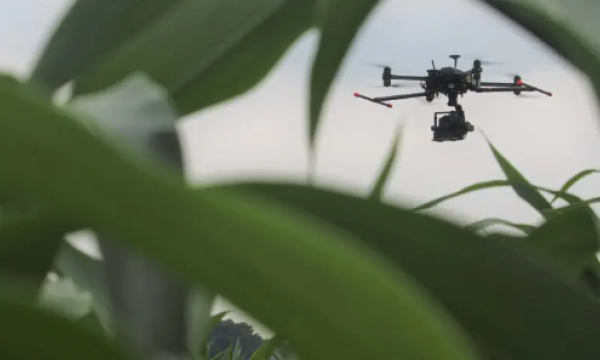General A Look at the Future of Drone Technology in Agrofood
On December 11, 2024, ILVO hosted the closing event of OpsDrone, a project researching and developing operational drone services for the agri-food sector. With 38 participants, including drone pilots, agricultural equipment manufacturers, farmers, policy makers and researchers, it was an inspiring day full of innovation.
During the event, the results of three years of research and development were presented. These results included designed business case templates, technical building blocks and demonstration datasets. The main topic of the day was an integrated demonstration case, in which VITO, ILVO and Colruyt Group Smart Farming joined forces to show the potential of drone technology in sustainable agriculture.
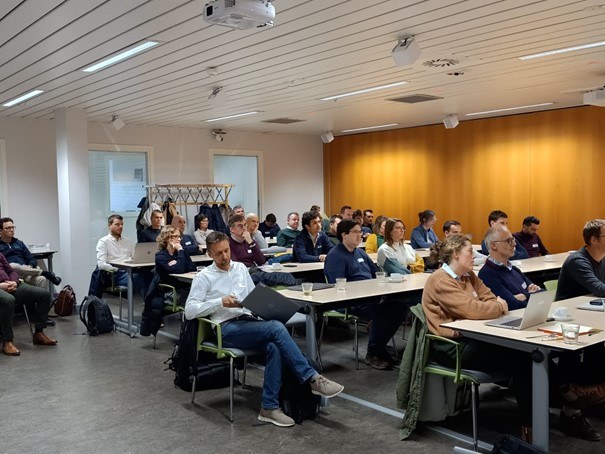
The Integrated Demonstration Case
In 2024, VITO and ILVO performed several measurements with drones and other sensors on an organic potato plot at Colruyt Group's Zilverleen organic farm. This case illustrated how drones can contribute to more sustainable farming practices.
Kobe De Cooman of Colruyt Group Smart Farming shared their vision on precision agriculture and how drone technology helps in the transition to sustainability. During the summer campaign, the teams perfromed various measurements, including soil scans, emergence flights, pest and disease monitoring flights, and a precision harvest measurement with an AVR harvester.
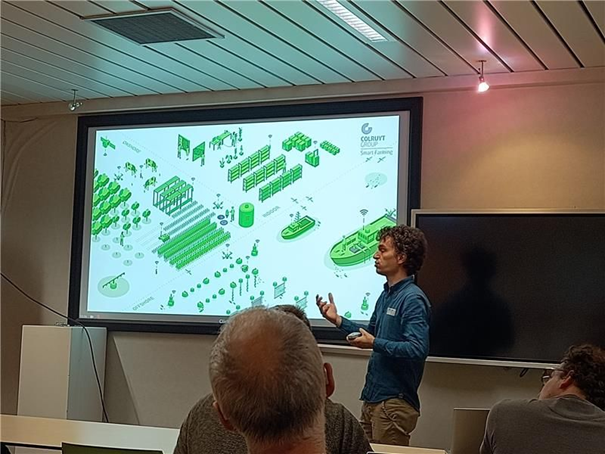
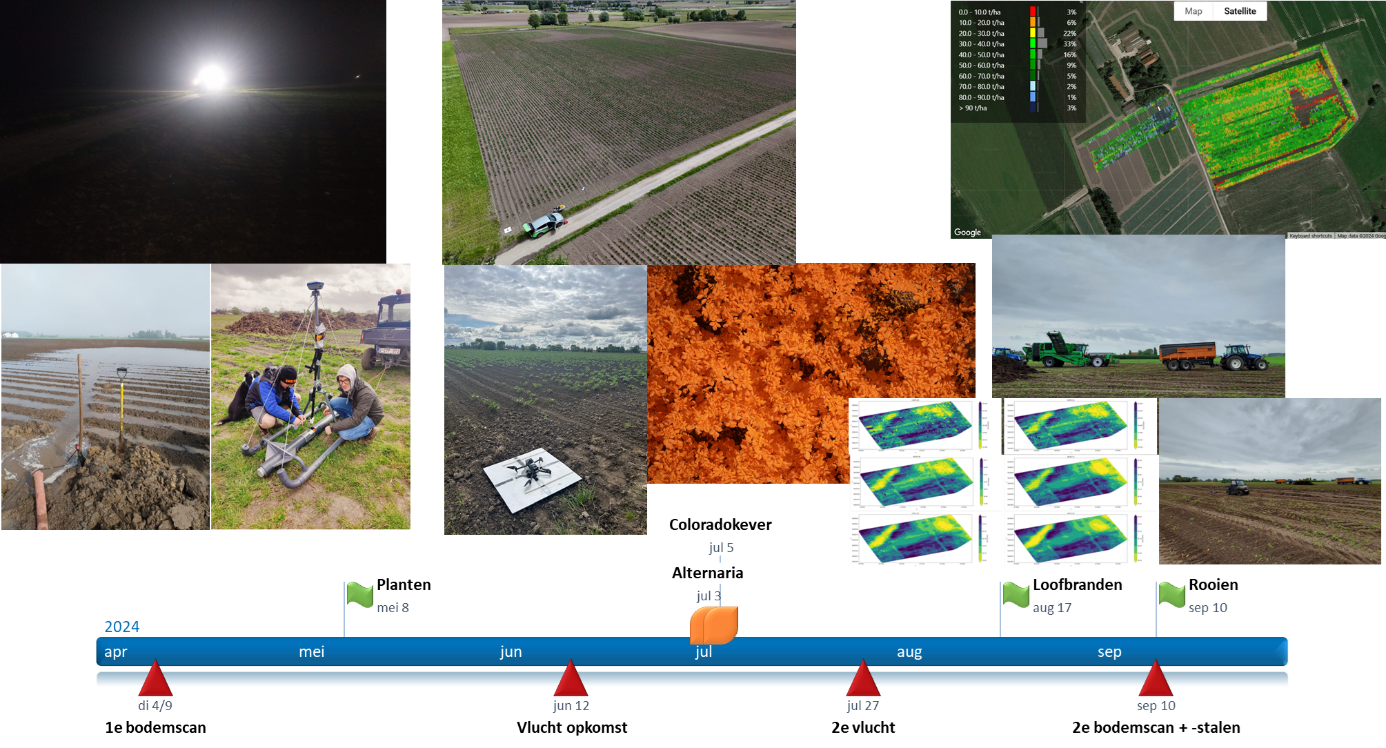
The data analysis revealed fascinating insights:
- Water damage, lower yields and compensation: The wet winter and spring had caused parts of the field to flood. This was detected early on during a first flight right after plant emergence and correlated with lower crop yield. Soil scans showed that there were no significant variations in soil properties within the plot, ruling out possible influences of this on the harvest. VITO used this data to demonstrate possible applications for weather insurance, such as calculating damage claims based on drone images.


- Monitoring pests and diseases: ILVO used high-resolution drone imagery to detect Colorado potato beetle pests and potato diseases such as Alternaria and Phytophthora. Weather conditions can have major influences on how quickly these diseases and pests spread in the field, with potentially disastrous consequences for the farmer. In these situations, early detection of the first infestations using a drone and image recognition (artificial intelligence) can reduce further crop losses and the drone flight can be profitable for the farmer. This was demonstrated by simulating different cost-benefit analysis scenarios.
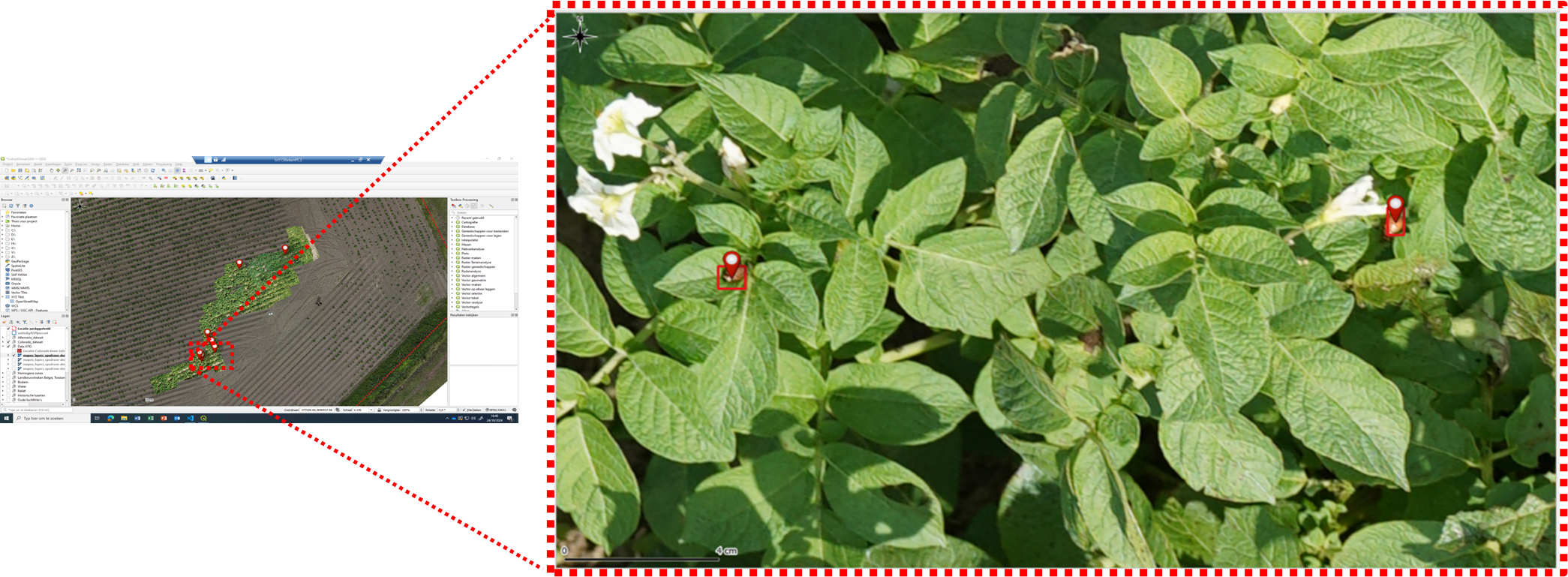

New Possibilities for Indoor Drone Technology
Bart Theys of Flanders Make presented the future of autonomous indoor drones. Using AI and SLAM (Simultaneous Localisation and Mapping) technology, drones can autonomously navigate greenhouses. A live demonstration of an indoor drone flight showed how this technology works in practice, offering promising applications for the greenhouse sector.

Networking and Innovation
The event concluded with a lively networking event. Several drone companies presented their services to visitors through booths, leading to valuable exchanges and new collaborations. For more details around this use case, please refer to this webinar recording.
Conclusion
The OpsDrone closing event showed how drone technology can transform the agri-food sector. We hope that both the supply and demand sides of these drone services for agricultural applications gained a better understanding of the current benefits and challenges and future potential of this very rapidly evolving technology. If you want to learn more about the project, be sure to check out this page.


